#David Quammen
Text
" Canton e Hong Kong sono situate nella regione del delta del Fiume delle Perle (Zhu), con metropoli come Macao, Shenzhen (città dallo sviluppo molto recente), Foshan, Zhongshan e altre ancora. Il 16 novembre 2002 un quarantaseienne di Foshan fu colpito da febbre e difficoltà respiratorie. Secondo quanto hanno stabilito i segugi dell'epidemiologia, spetta a lui il titolo di primo paziente di questa nuova malattìa. Non si sono conservati campioni del suo sangue o del suo muco, ma un forte indizio di SARS è il fatto che l’uomo contagiò a catena un bel po’ di persone (la moglie, una zia che gli fece visita in ospedale, il marito e la figlia della stessa zia). Il suo nome non è stato tramandato ai posteri; di lui si sa soltanto che era un «impiegato del governo locale». Un dato interessante del suo profilo, col senno di poi, è il fatto che avesse cucinato in precedenza piatti che prevedevano come ingredienti pollo, gatto e serpente. Mangiare serpenti non è insolito nel Guangdong, una provincia abitata da carnivori impenitenti e non schizzinosi, dove i menù potrebbero essere scambiati per la lista degli ospiti di uno zoo o di un negozio di animali.
Tre settimane dopo, all'inizio di dicembre, un cuoco di Shenzhen accusò gli stessi sintomi. Lavorava in una friggitoria e non si occupava direttamente di uccidere e preparare gli animali, ma ne manipolava le carni pulite e tagliate. Andò a farsi curare fuori da Shenzhen, allo Heyuan City People’s Hospital, dove trasmise la malattia ad almeno sei tra medici e infermieri, prima di essere trasferito a Canton, a duecento chilometri di distanza. Il giovane dottore che lo accompagnò in ambulanza si ammalò a sua volta.
Non molto tempo dopo, tra la fine di dicembre e l’inizio di gennaio, casi analoghi iniziarono a presentarsi a Zhongshan, città portuale situata un centinaio di chilometri a sud di Canton e poco distante da Hong Kong, che è dall'altra parte del Fiume delle Perle. Nel giro di poche settimane si registrarono ventotto casi. I sintomi comprendevano emicrania, febbre alta, brividi, dolore alle ossa, tosse forte e persistente con sangue nell'espettorato e progressiva compromissione dei polmoni, che si indurivano e si riempivano di liquido. La conseguente scarsa ossigenazione nei casi più gravi poteva portare alla morte. Tredici pazienti tra quelli di Zhongshan lavoravano nel settore sanitario e almeno uno era un cuoco, anche lui dedito alla preparazione di piatti a base di serpenti, volpi, zibetti (mammiferi di piccola taglia parenti alla lontana delle manguste) e ratti.
Gli ufficiali sanitari della provincia si accorsero della concentrazione di casi a Zhongshan e spedirono in loco vari team di «esperti» che si occupassero di cura e prevenzione, ma in realtà nessuno di loro sapeva nulla di questa misteriosa e ingannevole malattia. Uno di questi gruppi produsse un documento ufficiale in cui il nuovo morbo era definito «polmonite atipica» (feidian in cantonese). La stessa formulazione di uso generico fu ripresa qualche settimana più tardi dall'OMS nel suo primo bollettino. Una polmonite atipica è una qualsiasi affezione polmonare non attribuibile ai classici patogeni, come ad esempio il batterio Streptococcus pneumoniae. Utilizzare questa espressione ben nota in medicina fu un modo per stemperare e non accentuare la stranezza e la potenziale pericolosità dei casi di Zhongshan. In realtà quella specie di polmonite non era solo atipica, ma anomala, feroce e spaventosa.
Il bollettino ufficiale fu inviato agli ospedali e agli uffici sanitari della provincia (ma non fu reso pubblico). Conteneva anche una lista di sintomi tipici della malattia e una serie di raccomandazioni per arginarne la diffusione, che si rivelarono timide e tardive. A fine gennaio, un commerciante all'ingrosso di prodotti ittici, reduce da un viaggio a Zhongshan, fu ricoverato in un ospedale di Canton, da dove partì la serie di contagi a catena che di lì a poco avrebbe fatto il giro del mondo. "
David Quammen, Spillover. L’evoluzione delle pandemie, (Traduzione di Luigi Civalleri; collana La collana dei casi), Edizioni Adelphi, 2014. [Libro elettronico]
[ Edizione originale: Spillover. Animal Infections and the Next Human Pandemic, W.W. Norton & Company, Inc., 2012 ]
#David Quammen#Luigi Civalleri#pandemie#epidemie#saggi#ricerca scientifica#saggistica#citazioni#Spillover#COVID-19#divulgazione scientifica#biologia#epidemiologia#Canton#Hong Kong#Fiume delle Perle#Macao#Shenzhen#Foshan#Zhongshan#SARS#Guangdong#2002#malattie infettive#scienza#scienze#letture#leggere#libri#popolazioni umane
9 notes
·
View notes
Text
New book review!

Monster of God by David Quammen
Link
0 notes
Text
Epidemias e pandemias
O surgimento de epidemias e pandemias (surtos de doenças de natureza e localização disseminada) está intimamente associado a “atividades que aumentam o contacto direto entre pessoas e animais” mercê da “excessiva desflorestação, a expansão descontrolada da agricultura, a agricultura intensiva, a extração de minerais e o desenvolvimento de infraestruturas, assim como a exploração de espécies…

View On WordPress
#Adam Kucharski#As leis do contágio#Bill Gates#Como prevenir a próxima pandemia#Covid-19#David Quammen#epidemias#pandemias#vírus de Marburgo
0 notes
Text
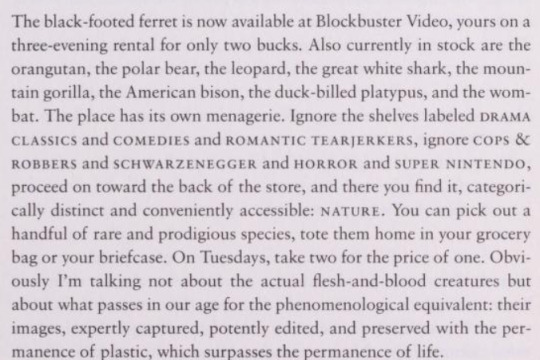
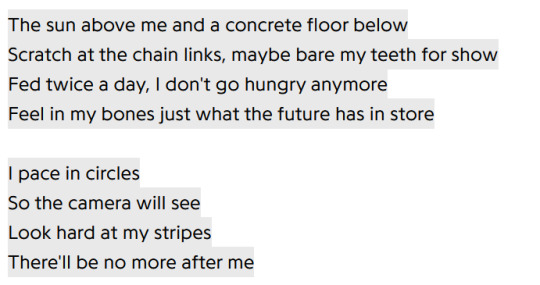
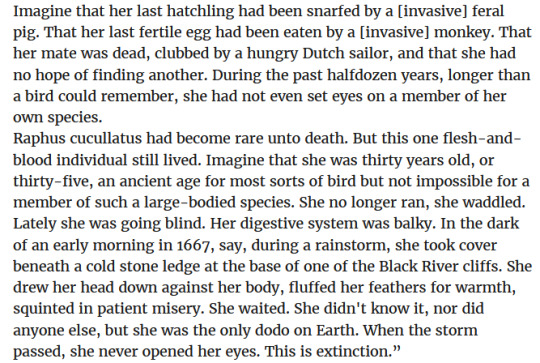



The Boilerplate Rhino, David Quammen / Deuteronomy 2:10, The Mountain Goats / Song of the Dodo: Island Biogeography in an Age of Extinctions, David Quammen
#alpaca posting#the mountain goats#i read a lot of david quammen as a kid#and he wrote a lot about extinction and endangerment#and ive been listening to the life of the world to come. god have i been listening to the life of the world to come
9 notes
·
View notes
Text
Finally finished reading the book I checked out MONTHS ago but never got around to
I maybe need to stop reading conservation ecology adjacent books tho. Bc… sad….
#anyway this one was Monster of God by David Quammen from like 2003#featured lions tigers and bears oh my!#and also crocodiles
2 notes
·
View notes
Photo
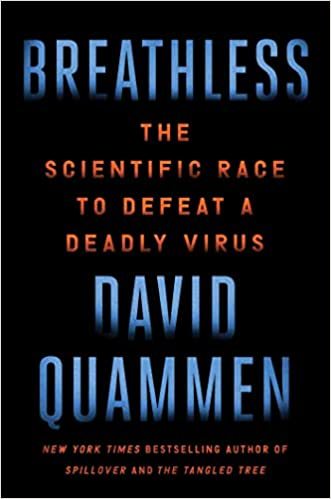
Breathless: The Scientific Race to Defeat a Deadly Virus
on bookshelves October 4, 2022
The race to outpace COVID Aug. 17, 2022
“Next generation” booster jabs for COVID-19 became available in the UK this week. But no one expects them to quash the coronavirus. So, how can science get ahead of the virus? It’s a question science writer David Quammen grapples with in his new book “Breathless: The Scientific Race to Defeat a Deadly Virus.” Quammen talks with The World’s host Marco Werman.
LISTEN 7:37 https://theworld.org/media/2022-08-17/race-outpace-covid
0 notes
Text
"Of course anyone who truly loves books buys more of them than he or she can hope to read in one fleeting lifetime. A good book, resting unopened in its slot on a shelf, full of majestic potentiality, is the most comforting sort of intellectual wallpaper." David Quammen
19 notes
·
View notes
Text
“ La mattina del 3 marzo 2004 la porta 537 si aprì e Kelly Warfield uscì dalla Segreta. La aspettavano nella sala d’attesa la madre e il figlio (per cui aveva ottenuto un permesso speciale), che andò a casa con lei. Il pomeriggio di quello stesso giorno ritornò all'USAMRIID*, dove i colleghi organizzarono una festa di fine isolamento, con tanto di discorsi e palloncini colorati. Parecchi mesi più tardi, dopo un periodo di sospensione, una lunga serie di analisi del suo sistema immunitario, di esami e supervisioni al limite dell'offensivo, oltre a una certa insistenza da parte sua, ottenne nuovamente il nullaosta per entrare nei laboratori di livello 4. Poteva tornare a stuzzicare la bestia che avrebbe potuto ucciderla.
«Non ha mai pensato di non tornare a lavorare su Ebola?» le chiesi.
Rispose di no.
«Perché le piace tanto il suo lavoro?».
«Non lo so di preciso» disse, e si fermò un attimo a riflettere. «Perché proprio Ebola? In fondo fa al massimo un centinaio di vittime all'anno». Non è una malattia di impatto globale e nonostante i toni apocalittici di certi autori è probabile che non lo diventerà mai. Per Warfield l’interesse aveva basi scientifiche. Per esempio, era affascinata dal fatto che un organismo tanto semplice fosse tanto letale. Ha un genoma minuscolo, quanto basta per costruire le sole dieci proteine che servono a formare le strutture di sostegno e a farlo replicare (un herpesvirus, per contro, ha una complessità genetica circa dieci volte superiore). Nonostante ciò il virus Ebola è feroce, capace di uccidere un uomo in soli sette giorni. «Come può una cosa così insignificante e rudimentale essere così orribilmente pericolosa?» si chiedeva Warfield. «Lo trovo davvero affascinante». “
* Istituto di ricerca sulle malattie infettive dell’esercito statunitense: un laboratorio per la guerra biologica riconvertito alla ricerca sulle malattie e sulle biodifese con sede nel Maryland.
---------
David Quammen, Spillover. L’evoluzione delle pandemie, (Traduzione di Luigi Civalleri; collana La collana dei casi), Edizioni Adelphi, 2014.
[ Edizione originale: Spillover. Animal Infections and the Next Human Pandemic, W.W. Norton & Company, Inc., 2012 ]
#David Quammen#Luigi Civalleri#pandemie#epidemie#saggi#divulgazione scientifica#scienza#saggistica#citazioni#ebola#malattie infettive#biologia#divulgazione#USAMRIID#letture#guerra tossicologica#guerra biologica#armi biologiche#NATO#scienze naturali#libri#leggere#Covid#Coronavirus#USA#Stati Uniti d'America#zoonosi#spillover#COVID-19#virus
16 notes
·
View notes
Text
Extinction alert: Bangladesh bids farewell to long-tailed macaques

Photo via NUS
Our country has lost an enigmatic monkey. Another name has piled up on the ever-expanding list of species that have left the country forever.
The long-tailed macaque has been declared endangered, falling under the category set by IUCN for the second to most threatened species. The species reels under habitat destruction, changing landscapes, fragmented population and illicit trade practices. In places, it is regarded as a pest, spent as pharmaceutical test subject and often recommended for culling and removal.
This assessment looked into the macaque's status in each of the countries it reportedly lives in and formally confirmed its extinction from Bangladesh.
read more here

Help long tail macaques here!
“If the world of nonhuman primates offers an emblem of the tensions of modernity, it’s Macaca fascicularis, the long-tailed macaque. This alert, adaptable Asian species is one of the world’s most familiar monkeys, but also among the most sorely taken for granted…its current population status is poorly known but, by reliable accounts, combines the good news of broad distribution with the bad news of declining numbers.”
-DAVID QUAMMEN
189 notes
·
View notes
Text
Untitled Wednesday Library Series, Part 114
Today's feature has been riding pine since Part 2 — I've glanced at it sidelong every week for two years and change, but the time has never felt right. It doesn't feel right now either, but I recently gave it a reread and might as well get it over with while the memory is fresh. This is a personal pseudo-favorite and probably one of the only things I own that could be called infamous (though admittedly only by a certain type of guy), but it's not especially easy to sum up.
A New Bacteriology, right? Originally published in 1980 as Introduction à la nouvelle bactériologie by the University of Montreal Press, this text has probably saw more distribution in this 1983 English translation under Jones and Bartlett Publishers, Inc. The frontmatter cites the whole 'staff for this book'; like last week I'll include a photo with the cover shots.
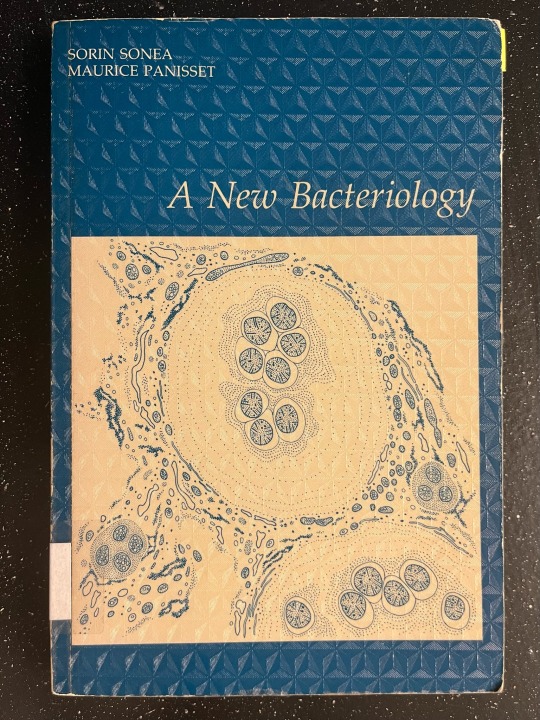
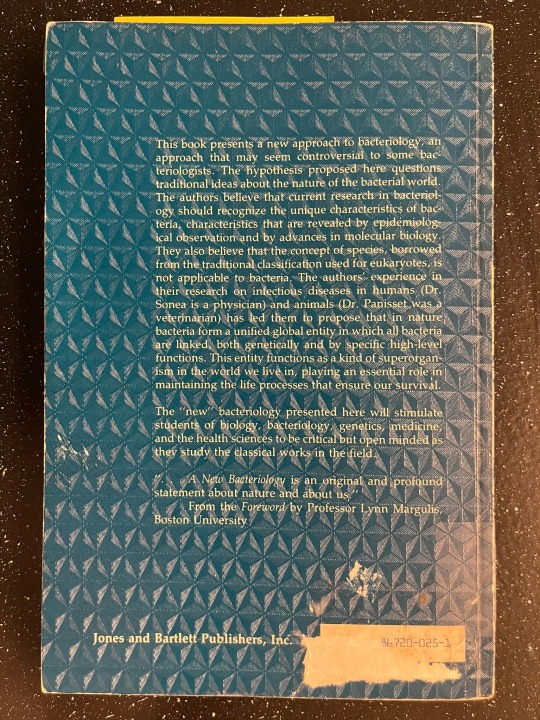


Evidently there exists an ISBN for a clothbound edition, but I’ve only ever seen the paperbacks.
The How
I probably first encountered the title in a David Quammen book or something, but I didn't hunt down a copy until I made friends with a former professor in the philosophy of biology. He didn't/doesn't work on systematics, but somehow or another this got mentioned and I found a used copy on eBay. This has never been reprinted and scans are scarce; these days the online secondhand market seems spooky. As always, let me know if you want a look inside and I'll hook you up.
The Text
I can't say much about either author — Panisset died in '81 and I frankly haven't bothered to track down any of Sonea's other stuff. Microbiologists both, of course, working while the field was in profound flux. Endosymbiotic theory had only been substantiated by Lynn Margulis in '67, and Archaea weren't defined until a decade later, in the early stages of this book's composition. Both of those are important here.


This is not a gentle book. It's a manifesto with several interests, most salient of which is the argument that various modes of horizontal gene transfer, limited local genetic information, and co-evolution of bacterial 'teams' makes all 'bacteria' (these days we'd say prokaryotes; the usually mean to include what we'd now call Archaea) parts of a global superorganism. Under this view, species are bunk; bacteriophages are less virus and more a tool of bacterial evolution; most microbiologists are basically close-minded. Oh, and because of all of that, the Gaia hypothesis is correct. There's a lot going on here. Lynn Margulis wrote the intro to this version and is mentioned several times throughout, if you can imagine that. I do not have enough space here to say all I want to about that and her, so let it suffice that it makes complete sense she went to bat for this.
If the book is interesting for anything, it's the way it goes about structuring its arguments. It is basically a philosophical artifact; there's no new wet work going on at all, and appeals to, say, numbers and novel observations and discrete mechanisms are sparse. That it works like a philosophy of biology book but is aimed at biologists as such is probably its greatest rhetorical weakness (if you’re not counting the usually Gaia stuff). There are some fascinating rhetorical slants going on around gene transfer mechanisms that I'll mention exist; say so if you want to hear more.
If their gripes about their field hold any water, there are some deep and complicated implications for the rest of biology in light of work done since the 80s. The conclusions drawn here are often silly, mostly toothless, and politically a bit dicey, but some of their insights have (through other channels, usually with different flavors) come to widespread, if tacit, acceptance anyway. I think I'm comfortable calling this recommended, but certainly not endorsed, reading.
The Object
Eh. Small publishing house doing what it could with a rather complicated job. The typesetting and printing is completely adequate but a little frustrating in the way that basically all biology writing is. The early 80s were especially bland in scientific publishing; absolutely no frills or risky moves. A bit of a shame, but I'm used to the disappointment.
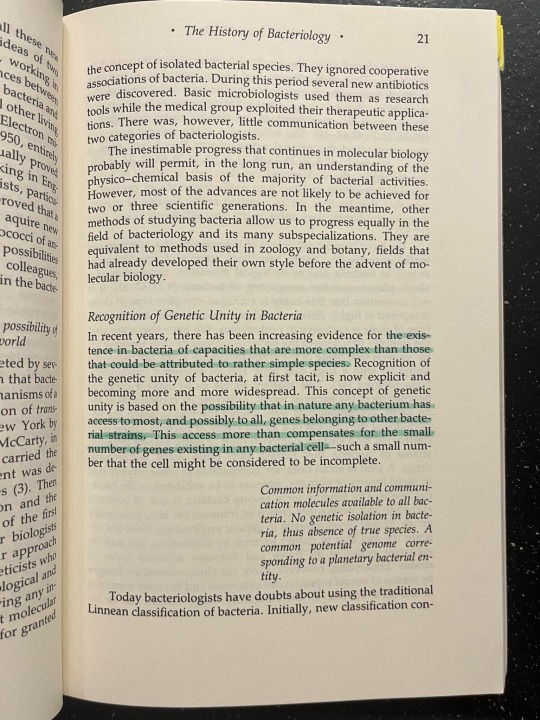
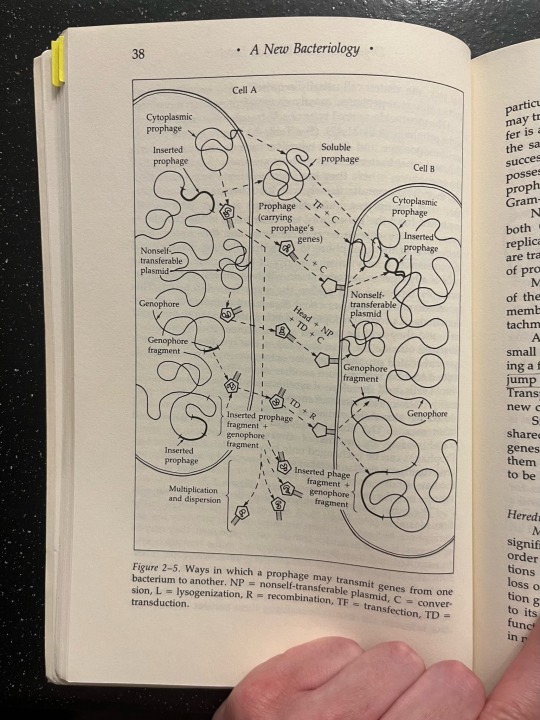
This copy needs repairs, but not so urgently I'll likely have them made any time soon. It's stable, at least for another decade or so. Interestingly a previous owner made notes in French.
The Why, Though?
Because I expected it to give me complicated feelings and also because it did. As a bonus, if I ever need to launder my sympathies for systematic radicalism as a passing academic interest, having a slightly ratty copy of this on my shelf will probably do the trick.
27 notes
·
View notes
Text
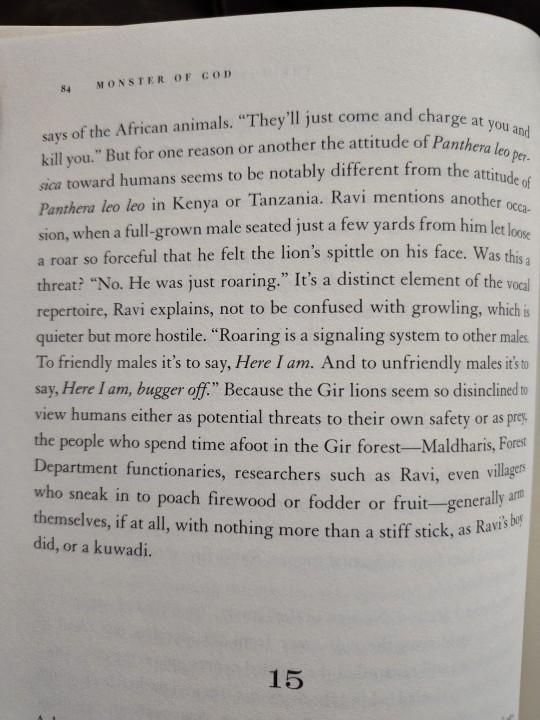
Monster of God: The Man-Eating Predator in... by David Quammen ISBN: 0393051404
4 notes
·
View notes
Text
American Gods’ incomplete bibliography (3)
If you want to have access to the full, original bibliography as prepared by Neil Gaiman (it has a lot more info I do not put in my posts - my posts are just summaries and recaps of the original bibliography) you just need to go check Neil Gaiman’s website right here: https://www.neilgaiman.com/works/Books/American+Gods/in/183/?type=Books&work=American+Gods
7) First Nations myths
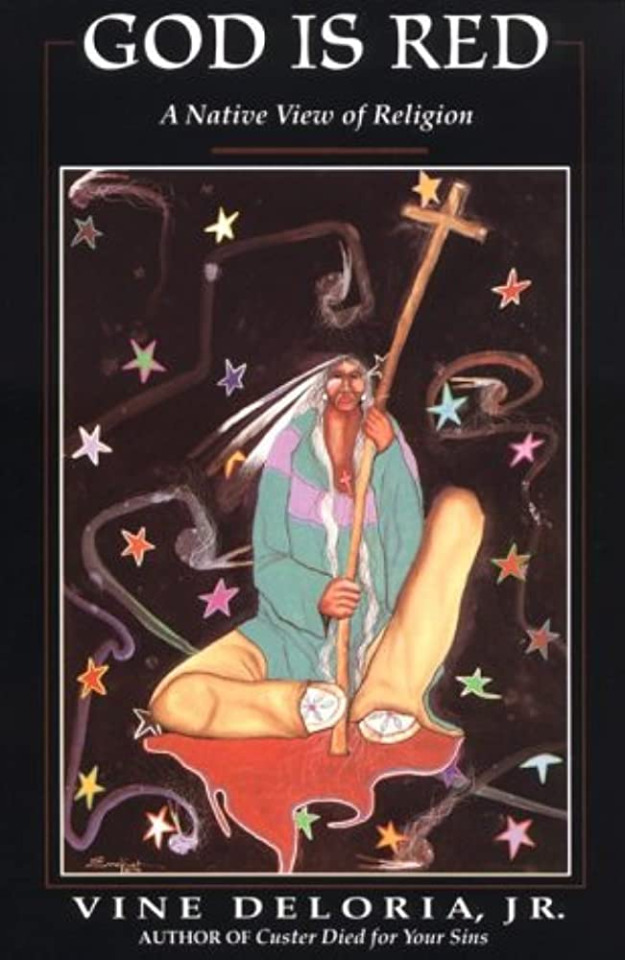
God is Red: A Native View of Religion
Neil Gaiman considers it a “very readable book about religion from a Native American standpoint” - though he was a bit puzzled by how the middle of the book “wander into Velikovsky”.
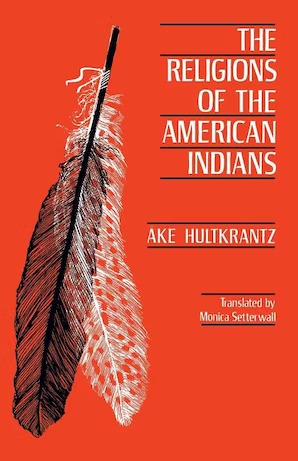
The Religions of the American Indians

American Indian Myths and Legends
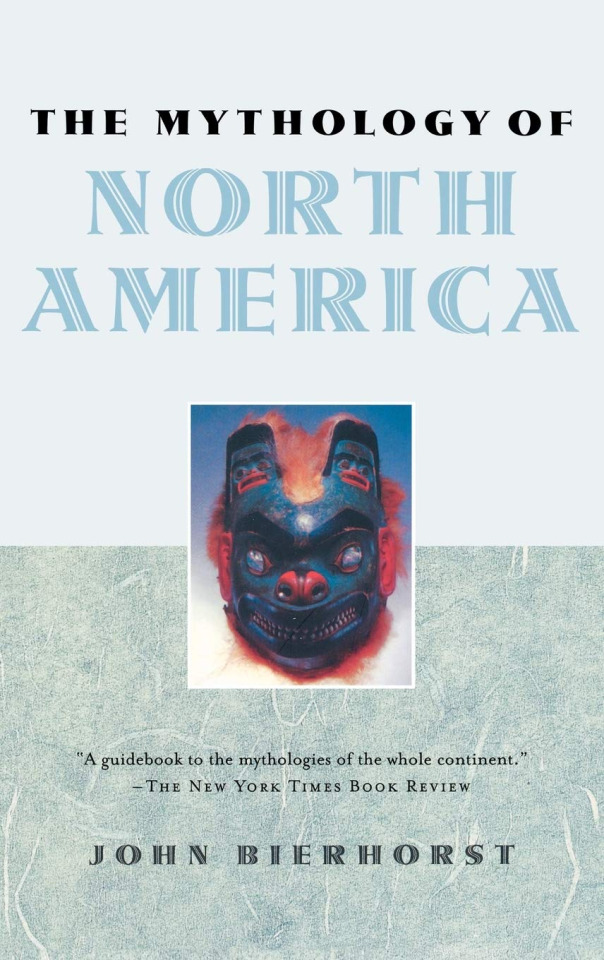
The mythology of North America
8) Background books

On the Rez
A book about the Oglala Sioux on Pine Ridge Reservation, one of the porrest places in America (at least at the time Neil Gaiman put together his bibliography), and about SuAnne Big Crow, a basketball player.

Confederates in the Attic: Despatches from the Unfinished Civil War
Neil Gaiman bought and tried to read it in preparation for American Gods, but couldn’t get into it... It took him two whole years to get into it again, as he was writing American Gods, and he devoured it.

The Forbidden Zone
Neil Gaiman first read a chapter of this book while doing online research about slaughterhouses. Despite the book being out of print, he managed to obtain a copy from a New Mexico bookstore - and this book ended up shaping and informing American Gods in many ways, both direct and indirect. Neil Gaiman is really sad that it is out of print ; and he points out that he has been a fan of the author, Michael Lesy, ever since another one of his books, “Wisconsin Death Trip”, about painting a darker and disturbing picture of the Wisconsin in frontier times. Wisconsin Death Trip is in fact another one of the books that influenced American Gods: some anecdotes and attitudes from this book ended up being present in the Lakeside parts of the novel.

The Day of the Dead and other reflections
(Of its actual title, The Day of the Dead and other mortal reflections)
Neil Gaiman considers the author one of his favorite essayist alongside David Quammen - and it is from this book that Neil Gaiman “got” Coatlicue.

Stranger from a Distant Shore: A History of Asian Americans
Neil Gaiman used this book to research a lot of stuff that “never worked its way into American Gods”, but that will maybe appear in another book. At least, this is what he writes in the bibliography, but since we are all American Gods fan of modern days, we now know what he referred to in the bibliography: the “Somewhere in America” deleted section about a kitsune ending up in a Japanese internment camp of WWII America.
9) African heritage
As Neil Gaiman says, these are the books he used concerning Mr. Nancy, and “the tale of the twins” (Wututu and Agasu).


A Treasury of Afro-American Folklore + A Treasury of African Folklore, by Harold Courlander
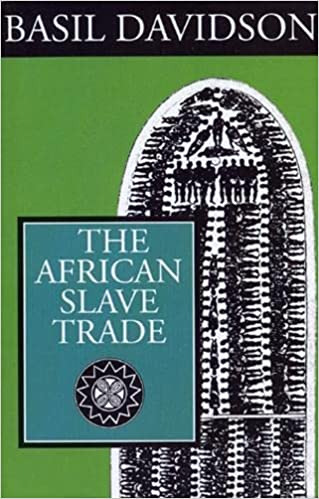
The African Slave Trade, by Basil Davidson

The Slave Trade: The Story of African Slave Trade, 1440-1870
(Of its actual name, “The Slave Trade: The Story of the Atlantic Slave Trade)
Neil Gaiman precises that he took a lot from this book, written by Hugh Thomas, alongside Bullwhip Days (see below) - but he also admitted that he had to downplay what actually happened historically when writing “American Gods” because he didn’t want to turn his scenes into an “atricity exhibition”.

Bullwhip Days: The Slaves Remember - An Oral History
In Neil Gaiman’s words, “Urgent, human narratives and utterly heartbreaking”, as this book is a collection of the testimonies of the last surviving Americans who had been slave, collected in the mid-1930s.
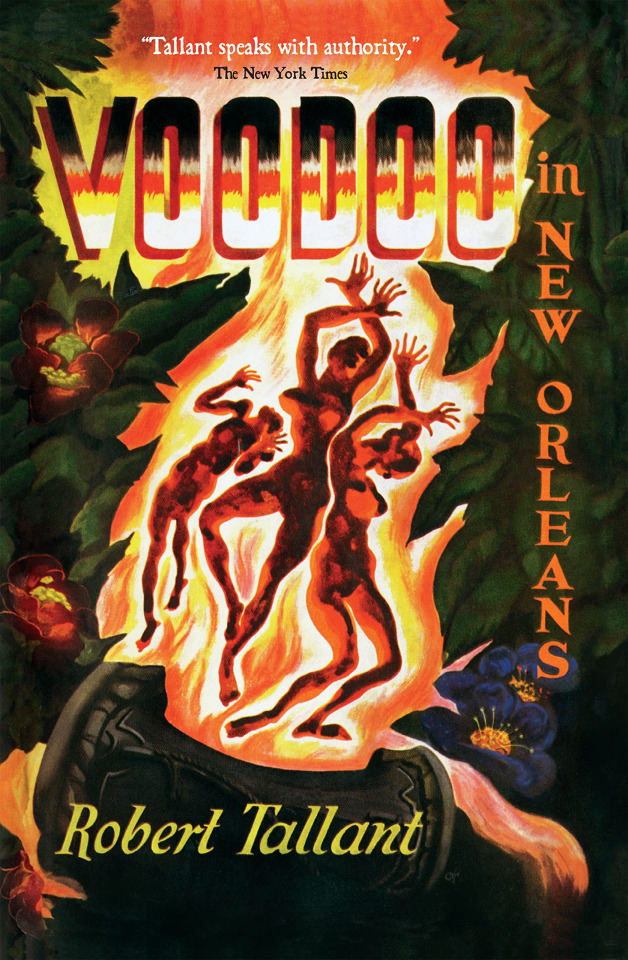
Voodoo in New Orleans
Neil Gaiman explains that this book does not manage to convey the actual feel of the New Orlenas Voodoo, but it is an excellent book when it comes to the history of the “various Maries Laveau or Marie Laveaux”. However, if someone wants a better book by Robert Tallant, they should check Gumbo Yaya (see below)

Gumbo Yaya
Neil Gaiman was offered this book as a gift by Nancy Collins, and he realized he did need it a lot. It is an excellent book covering the folk beliefs, magic and folklore of New Orleans and Louisiana.
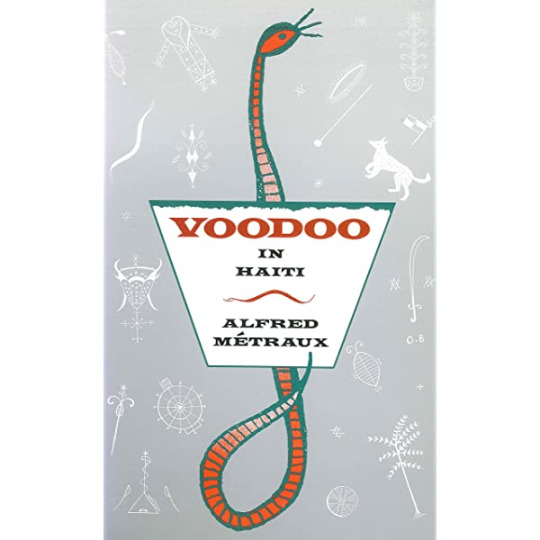
Voodoo in Haiti
A “fairly useful and interesting book”, according to Neil Gaiman. He does say that there is a lot of better books about the topic of Haitian voodoo, but he included it in the list because it was the book he used to check stuff when writing American Gods.
#neil gaiman speaks#american gods bibliography#american gods#voodoo#african mythologies#afro american history#history of slavery#native american mythology#american history#asian american history#bibliography#references#books#neil gaiman
34 notes
·
View notes
Text
𝐏𝐄𝐎𝐏𝐋𝐄 𝐈'𝐃 𝐋𝐈𝐊𝐄 𝐓𝐎 𝐆𝐄𝐓 𝐓𝐎 𝐊𝐍𝐎𝐖 𝐁𝐄𝐓𝐓𝐄𝐑 !

alias / name: boar
birthday: july
zodiac sign: cancer
height: 5'4"
hobbies: i don't have hobbies because i'm full of existential dread
favorite color: black
favorite book: dracula
last song: seeker missile - dynastic
last film / show: law & order: svu
recent reads: spillover by david quammen, lapvona by ottessa moshfegh
inspiration: the worms in my brain
story behind url: atavism refers to the reappearance of an ancestral genetic trait that's been lost through evolutionary changes ( i.e. snakes with vestigial legs). in waylon's case it's specifically about the reptilian structure of his heart
fun fact about me: one time i drove a rabies specimen ( decapitated dog head ) to the state lab for testing and at the time i had a bumper sticker on my car that said " don't tailgate me, i have rabies "
tagged by: stolen from @pu1itzer tagging: whomsoever
3 notes
·
View notes
Text
“Celia” and her narrative have become a product of the chapter in the ungulate’s life where she is as an endling, a clone, and then the world’s only double extinction. In this story, Celia is unlucky, tragic, lost, alone, la última of her kind. (An endling of this trope is very strong in David Quammen’s The Song of the Dodo, where he asks the readers to imagine the last, lonely, little old lady dodo bird at the end of her species.) In this sort of telling, an endling like Celia draws heavily in popular imagination and prevention to what environmental scholar Ursula Heise calls a “gender fiction” involving “elegiac tropes of the bereaved mother and wife, as well as that of the elderly lady with health problems.” It’s much more tragic, it invokes so much more pathos, for the story of an endling to be told as a sad old lady ibex who died, alone, without family to mourn her.
“Laña,” on the other hand, was the name and persona that people in Torla had ascribed to the bucardo in her life and memorialized after her death. The bucardo museum was founded in April 2013, admist a whirlwind of discussion about possibly trying to clone Celia- that is, Laña- again. The museum, which successfully fought to curate Laña’s taxidermied remains, was emphatic in its commitment to the last bucardo being remembered in situ. That she should be “home” and visible to the community. “Being here, in Torla, meant that the bucardo could find new meanings outside of the realm of technoscience,” Searle notes. “Laña lives on.”
- Endlings: Fables for the Anthropocene, by Lydia Pyne
3 notes
·
View notes

